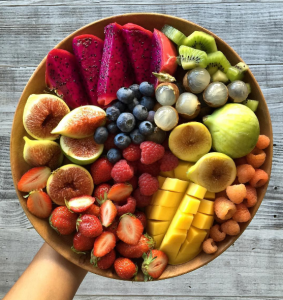Photo: raw_manda on Instagram
What is it?
The raw food diet, also known as raw foodism, is a diet which involves eating primarily or exclusively unprocessed and uncooked foods. The motivation behind the raw food diet stems from the belief that heating food removes its nutrients and natural enzymes. This diet originated in Switzerland in the early 1900s, and was founded by a physician named Maximilain Bircher-Benner, who opened a sanatorium practice that advocated for a diet of simply raw food. Though largely dismissed at its time of invention, the movement slowly continued to gain traction in the following years and is now gaining popularity as a modern diet.
What does this diet offer?
A raw food diet includes fruits, vegetables, nuts, seeds, and sprouted grains, which are all uncooked. Some raw food diet plans advocate for a diet that is 75 percent raw, while others require following a 100 percent raw regime. A raw food diet is typically low in calories and high in fibre, which makes it ideal for weight loss. A key component of the diet is that none of the raw foods can be processed or pasteurized.
Menu ideas
For breakfast, start your day off with a fresh fruit smoothie made with bananas, strawberries, raspberries and mangoes. Blend the fruit with unprocessed coconut water. For lunch, try a garden salad with raw tomatoes, carrots, and onions. End your day with a filling spaghetti squash dish made with fresh basil and homemade tomato sauce.
Should you try it?
The raw food diet has been highly controversial since its invention. Many dietitians note that the raw food diet lacks essential nutrients like calcium and protein, and many foods actually need to be cooked in order to release their nutrients. If eating 100 percent or even 75 percent raw seems unrealistic for you, try simply increasing your daily intake of raw food. You should always consult a dietitian before embarking on any new diet, to ensure that it suits your individual dietary needs.

